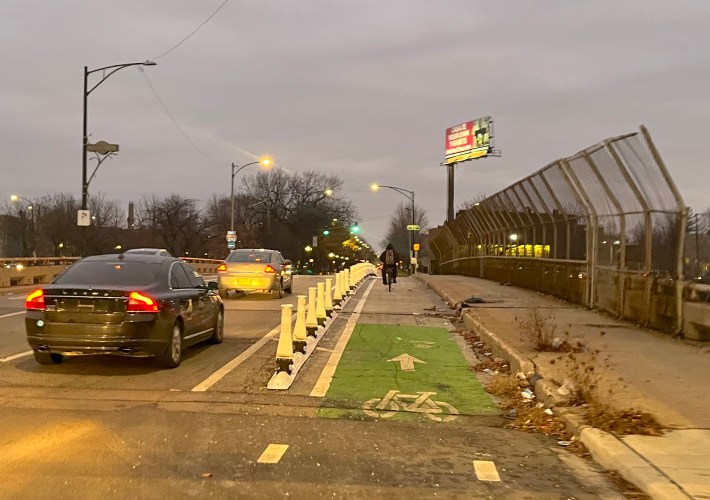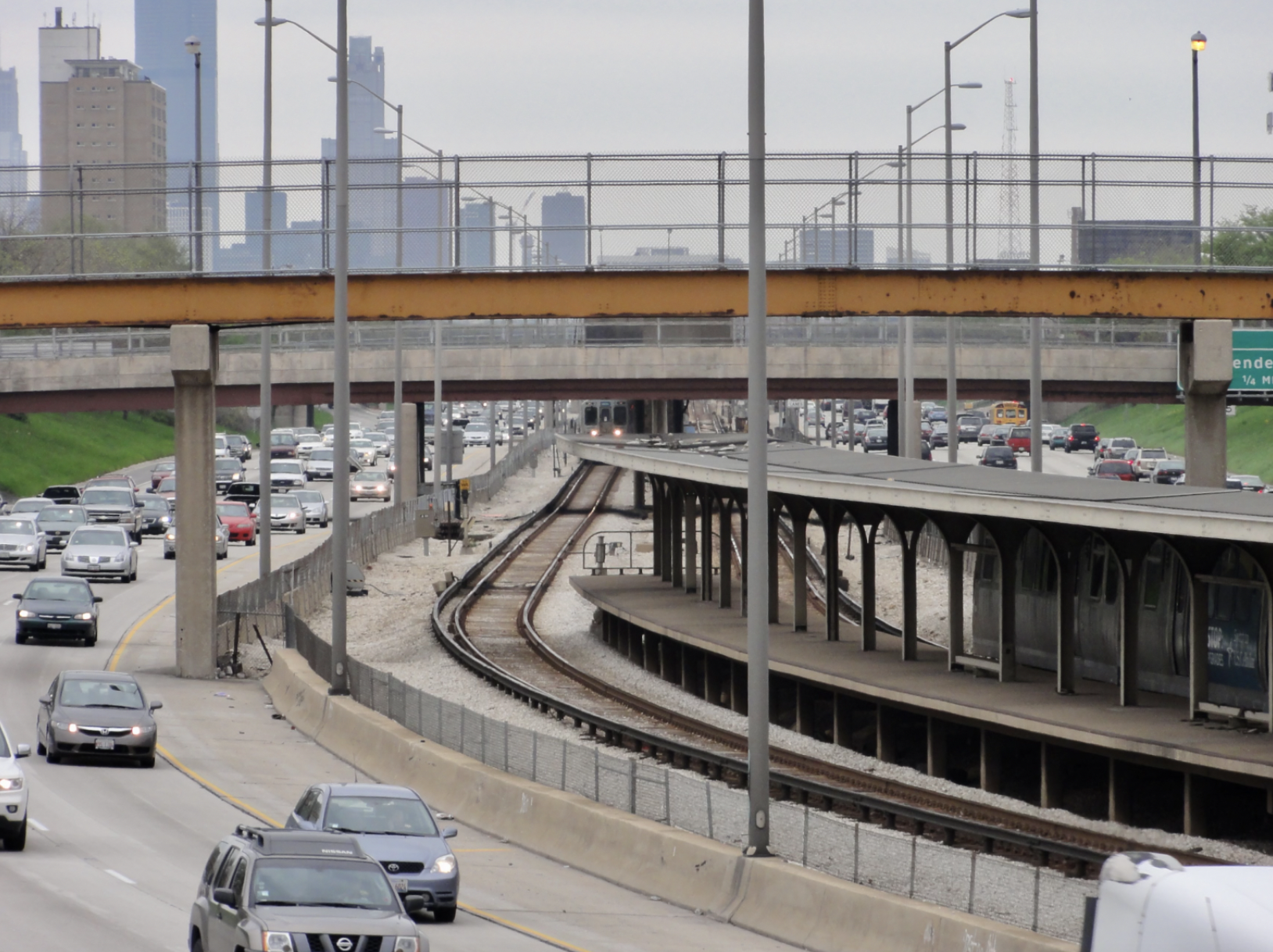
Update 4/17/24, 1:45 PM: Ted Villaire, spokesperson for the Active Transportation Alliance, provided this response to the City's announcement:
"Improving connections among West Side communities along I-290 and enhancing safe access to the CTA’s Blue Line for people walking and biking will be a step toward mending the urban fabric that was torn when the expressway was built. The legacy of divided neighborhoods, displacement, and reduced economic opportunities must not be ignored. We hope this is just the beginning of a systematic effort to address the many ills that came with building an expressway through these West Side neighborhoods decades ago.''
Update 4/17/24, 7:30 AM: Kyle Lucas, cofounder of the grassroots sustainable transportation advocacy nonprofit Better Streets Chicago, provided the following response to the news:
"The spirit of the Reconnecting Communities program is commendable and we agree with Mayor Johnson, Governor Pritzker, and Senators Durbin and Duckworth [read statements from Pritzker, Duckworth, and Durbin in the Mayor's Office's news release] that the construction of the Eisenhower was devastating for West Side communities. However, this fails to address IDOT’s plans to widen I-290 further. $2 million for a few bike lanes, pedestrian bump outs, and bushes on top of yet another multi-billion-dollar highway expansion project will do little to address either the historical nor ongoing harms that highways impose.
Bold leadership would reconsider the role that highways play in our regional transportation system: They poison our communities, maim and kill thousands of Chicagoans in traffic crashes annually, and are a massive sunk cost both to build and maintain. Our leaders must get serious about investing in expanding and modernizing transit – like extending the Blue Line – instead of doubling down on the planning mistakes of the '50s."
It's been almost seven decades since the construction of Chicago's Eisenhower Expressway, aka I-290, began in 1955, disconnecting West Side communities and accelerating white flight. Today the City of Chicago announced that it has been awarded $2 million from the U.S. Department of Transportation's Reconnecting Communities and Neighborhoods program. The grant is intended to help Chicago respond to the damage that 20th Century highway construction caused to urban neighborhoods, particularly communities of color.
"This funding will support the City in engaging the community, and identifying and planning infrastructure improvements to promote traffic safety and enhance accessibility and connectivity on Chicago’s West Side," stated a news release from Mayor Brandon Johnson's office. "These efforts will closely align with ongoing efforts to rebuild and modernize the I-290 highway and Blue Line transit corridor, led by the Illinois Department of Transportation and Chicago Transit Authority."
The current CTA project to rehab the 'L' corridor is obviosly a good thing. But as Streetsblog has previously noted, IDOT's plans to widen the Ike would lead to more driving, crashes, congestion, and pollution, and be counterproductive to fighting climate change. However the fact that there will be more money to make sustainable transportation modes safer and more appealing on the West Side is encouraging news.
"The construction of I-290 in the 1950s destroyed homes and businesses, segregating our city and displacing entire communities," said Johnson in a statement. "Today, it continues to be a physical barrier for West Side Chicagoans, so this funding is an important step towards reconnecting these communities and improving mobility."
According to the Mayor's Office, over 13,000 homes, 400 businesses, and nine acres of parkland were eliminated by the construction of the expressway, which lasted 17 years until 1972. "Tight-knit communities were displaced or scattered while the new expressway system catalyzed suburban development and white flight. The effect of these physical and societal forces left poor and minority residents in disconnected neighborhoods with reduced economic opportunities." The press release says the funding will help improve "community safety, cohesion, and quality of life through enhanced connectivity over and around the expressway."

The City hasn't specified exactly how the $2 million will be used. But the Mayor's Office says the grant will help provide "improvements for people walking and bicycling on existing streets and paths surrounding and crossing the corridor, adding or enhancing pedestrian bridges and bicycle facilities" and other road network upgrades "through Complete Streets principles."
So, while the devil's in the details, it appears that this grant could help make it safer, more efficient, and more enjoyable to use sustainable transportation in communities that have long suffered the consequences of highway construction.
Streetsblog has reached out to local sustainable transportation and mobility justice groups for their take on the news, and this post will be updated if we hear from them.

Did you appreciate this post? Please consider making a tax-deductible donation to help Streetsblog Chicago keep publishing through 2025. Thank you.






